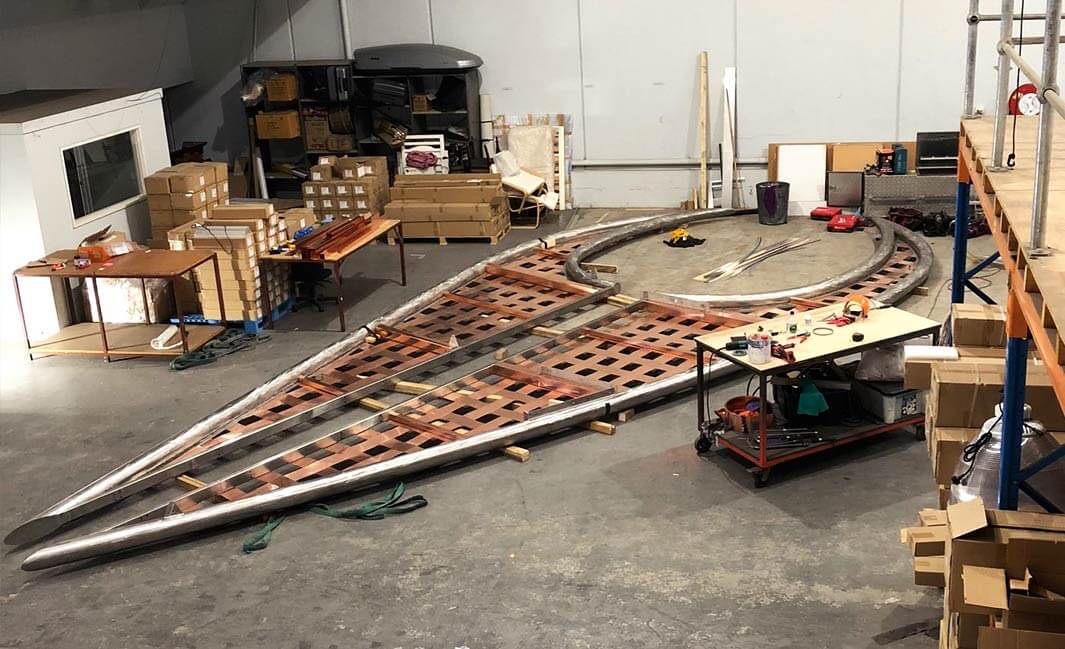 APEC Haus is animated by some notable foundation art and sculpture located externally and internally throughout the building. Of particular note at the main entrance plaza is a sculpture designed by Jim Fitzpatrick Architects depicting two ‘lakatoi sails’. The lakatoi sail sculpture provides a dramatic sense of arrival and defines the main entry to the building. Standing at an overall height of 12 metres the sculpture extends upwards to the curved roofline of the building. The sculpture composition takes its form by referencing the twin vertical sails found within historical imagery of lakatoi sailing crafts taken by annual explorer trading expeditions to the Papuan Gulf. In this instance the sails are upright, meeting the lakatoi roof of APEC Haus, ready for a prosperous journey of trade.
APEC Haus is animated by some notable foundation art and sculpture located externally and internally throughout the building. Of particular note at the main entrance plaza is a sculpture designed by Jim Fitzpatrick Architects depicting two ‘lakatoi sails’. The lakatoi sail sculpture provides a dramatic sense of arrival and defines the main entry to the building. Standing at an overall height of 12 metres the sculpture extends upwards to the curved roofline of the building. The sculpture composition takes its form by referencing the twin vertical sails found within historical imagery of lakatoi sailing crafts taken by annual explorer trading expeditions to the Papuan Gulf. In this instance the sails are upright, meeting the lakatoi roof of APEC Haus, ready for a prosperous journey of trade.
Annual hiri trade journeys are well-documented. Fleets of hiri trade voyagers would leave in multi-hulled sailing ships (lakatoi) from the Port Moresby area of Bootless and Caution Bays when southeast trade winds blew in October/November returning with the monsoons around January. The annual lakatoi trading expeditions brought shells and ceramic pots to the western Gulf Province villages in return for sago and canoe hulls that were strapped to lakatoi for the return voyage. The sail of the lakatoi forms a distinct shape similar to a crab claw sail. The lakatoi and hiri trade tradition continue to be an important iconic tradition of southern PNG culture and is commemorated today during Hiri-Moale cultural festivals associated with PNG National Independence Day celebrations held in September.
Jim Fitzpatrick Architects were appointed to work in collaboration with the PNG National Museum and Art Gallery (NMAG) and LUMP Studio to develop, construct and deliver the external art and cultural projects for APEC Haus. Constructed from marine grade stainless steel filled with interwoven copper slats, the 12 metre high work displays the lakatoi sails under voyage, a symbol of robust trade that is enjoyed by Papua New Guinea today. Although these notable foundation works will be in place for the opening of APEC Haus and the APEC Summit in 2018, other works will evolve as the life of the building evolves. The design team is greatly indebted to the Board and staff of the PNG NMAG who kindly provided images of artwork/objects and approved the design interpretation.



















